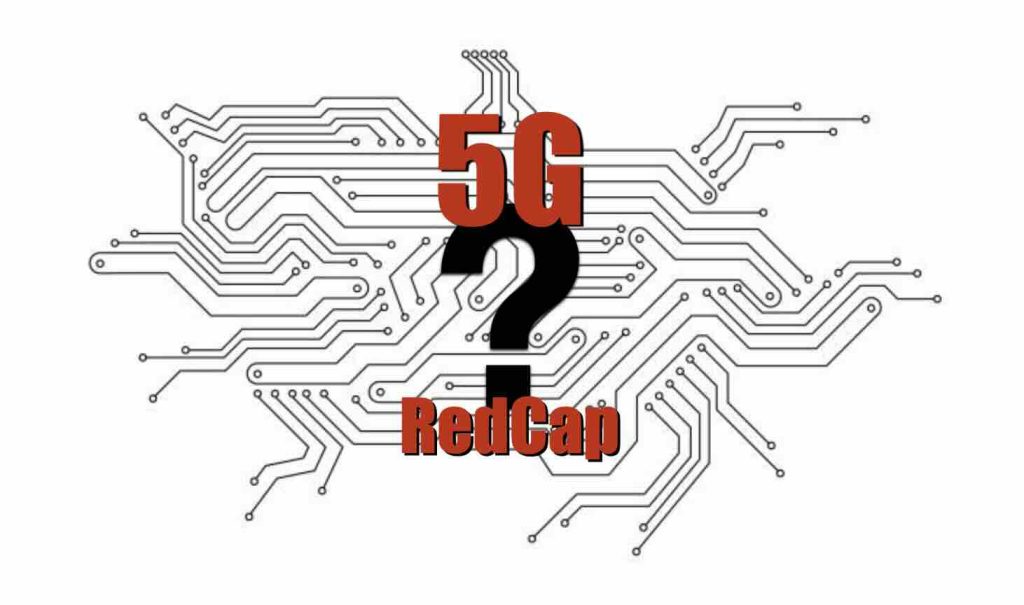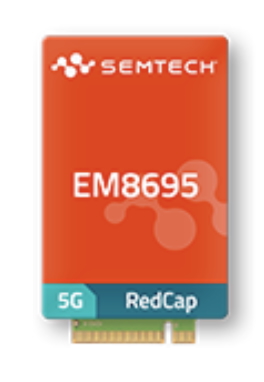
Table of Contents
As 5G continues to evolve, a new innovation known as 5G RedCap (short for “reduced capabilities”) is poised to play a pivotal role in expanding the reach and versatility of 5G networks. Introduced in the 3GPP’s Release 17, RedCap aims to address the needs of mid-tier IoT applications by providing a cost-effective, power-efficient alternative to full-scale 5G.
Let’s explore what 5G RedCap is, how it works, and its potential impact on industries worldwide, with insights from recent developments by companies like Semtech and major carriers such as AT&T and T-Mobile.
What is 5G RedCap?
Also known as NR-Light, 5G RedCap is a streamlined version of 5G tailored for devices that don’t require ultra-high-speed connectivity. By reducing the complexity and bandwidth requirements of traditional 5G, RedCap enables cost-efficient and power-saving solutions for IoT devices such as wearables, sensors, and surveillance cameras.
Whereas traditional 5G operates within a 100 MHz channel, RedCap reduces this to just 20 MHz, achieving data transfer speeds of 30 Mbps to 80 Mbps—sufficient for most IoT use cases. This reduced capability is designed to extend battery life and lower costs, making it ideal for applications where ultra-high throughput is unnecessary.
How Does 5G RedCap Work?
The key to RedCap’s efficiency lies in its optimized use of network resources. By scaling down bandwidth and simplifying antenna requirements, RedCap delivers a more targeted approach to connectivity. This reduction in complexity not only extends battery life but also decreases manufacturing costs, paving the way for affordable 5G adoption in emerging markets and industries.
RedCap modules like Semtech’s EM8695 leverage Qualcomm’s Snapdragon X35 5G Modem-RF System, a chipset designed specifically for NR-Light applications. These modules provide LTE fallback capabilities and utilize the M.2 standard format for seamless compatibility with existing hardware, ensuring businesses can transition to 5G with minimal disruption.
Recent Developments in 5G RedCap
Carrier Rollouts
U.S. carriers are at the forefront of RedCap adoption. T-Mobile launched its first RedCap device towards the end of 2024, while AT&T expects its first devices to hit the market in 2025. Early product categories are likely to include wearables, compact mobile hotspots, and USB dongles, offering practical solutions for consumers and businesses alike.
AT&T’s early testing of RedCap devices, such as the TCL Linkport IK511 5G dongle, has demonstrated the technology’s viability. Additionally, T-Mobile’s standalone (SA) core network, operational since 2020, underscores the readiness of U.S. carriers to support RedCap deployment.

Semtech’s Contributions
Semtech Corporation has made significant strides in advancing RedCap technology. Its EM8695 module recently achieved FCC and PTCRB certifications, validating its compatibility with AT&T’s RedCap network. The module delivers a 65% reduction in power consumption compared to LTE Cat-4 and Cat-6 modules, while maintaining the scalability and longevity of 5G.
This innovation is expected to drive RedCap’s adoption across diverse sectors, including agriculture, healthcare, manufacturing, and smart cities. Semtech anticipates full certification with AT&T by mid-2025 and is actively pursuing global carrier certifications.
Why 5G RedCap Matters
RedCap’s introduction marks a turning point for IoT. By offering a middle ground between LTE and full-scale 5G, it provides the following benefits:
- Enhanced Efficiency: Reduced power consumption and bandwidth requirements translate to longer battery life and lower operational costs.
- Affordability: Simplified hardware designs make 5G connectivity accessible to a broader range of devices and industries.
- Future-Proofing: With LTE networks expected to phase out by 2030, RedCap ensures a seamless transition to 5G.
- Scalability: RedCap enables widespread IoT deployments, with global connections projected to reach 963.5 million by 2030.
Looking Ahead
As carriers and technology providers continue to develop and deploy RedCap solutions, its impact on the IoT landscape will be profound. From smart agriculture to industrial automation, 5G RedCap is set to revolutionize how industries harness connectivity.
For businesses and consumers alike, RedCap represents an opportunity to leverage 5G’s scalability and efficiency without the high costs associated with traditional implementations. With companies like Semtech and carriers like AT&T and T-Mobile leading the charge, the future of 5G IoT has never looked brighter.

